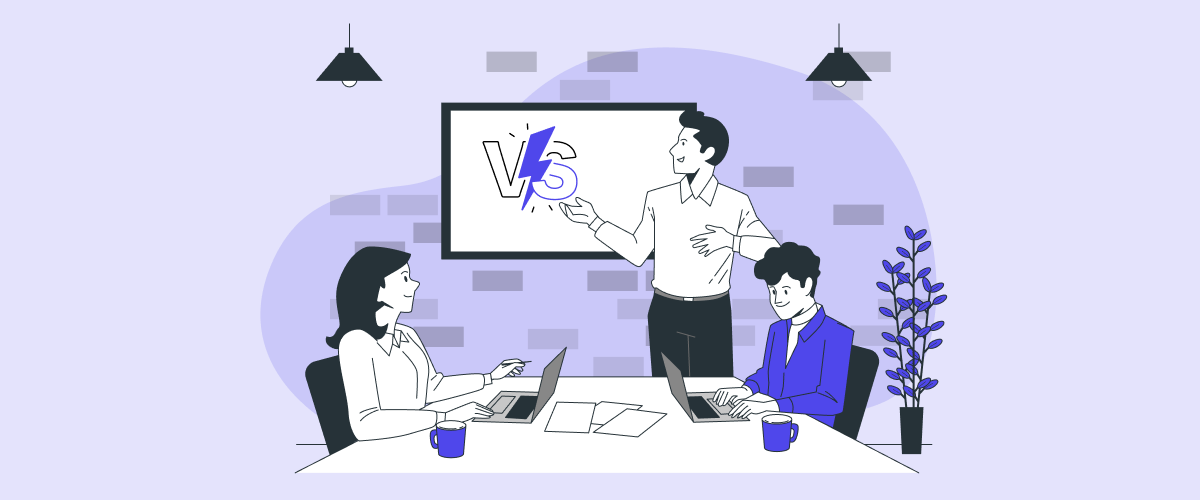Customer Acquisition vs Retention remains a crucial decision for every business. As business owners, should you often chase new customers or work to keep the ones you already have?
Basically, both customer acquisition and retention are vital for a company’s growth. It’s like choosing between water and oxygen – both are essential.
In this blog, we break down the differences and similarities between customer acquisition and retention. We’ll discover which offers better investment returns and under what circumstances. With clear insights, you’ll no longer feel caught in the middle but empowered to make informed decisions for your business.
Whether you’re starting a new business or steering an established company, getting the balance between customer acquisition vs retention is crucial. Dive in to discover where your focus should truly lie.
Concentrate on both acquiring and retaining customers by implementing loyalty programs with WPLoyalty.
Customer Acquisition vs Retention in E-commerce
The debate of “Customer Acquisition vs Retention” plays a pivotal role in shaping strategies for sustained business growth and profitability. Understanding and balancing these two aspects is crucial, especially when considering the impact of customer loyalty on acquisition and retention. Let’s explore their definitions and significance.
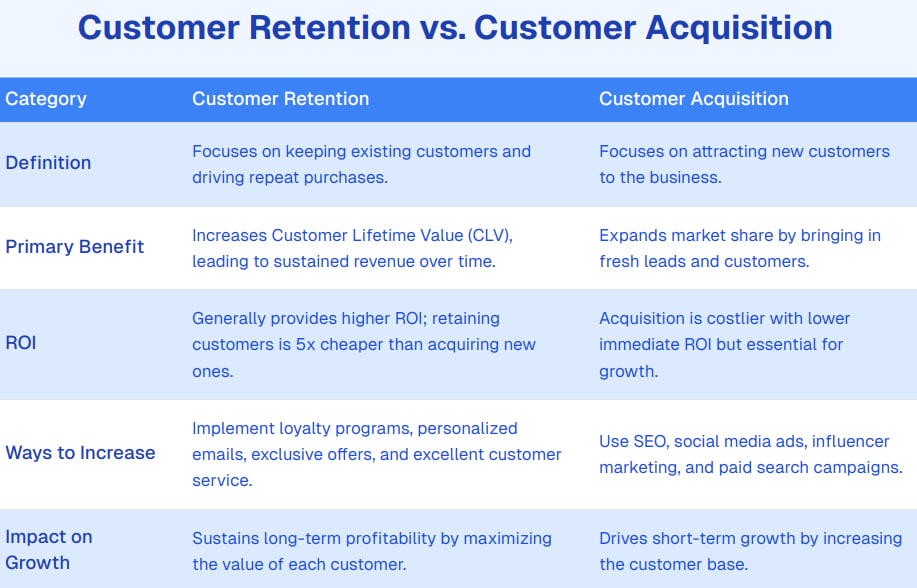
What Does Customer Acquisition Mean?
Customer acquisition is a term that refers to the process of gaining new customers for a business. The acquisition involves attracting people who haven’t bought from the company before.
Businesses use ads, special offers, promotions, etc., to attract these new customers to their products or services. Acquiring new customers helps a business grow and increase its profits.
What Does Customer Retention Mean?
Customer retention is a term that refers to the methods and actions a business uses to keep and strengthen its relationships with the customers it already has.
After customers make their first purchase, the business works to make sure they keep coming back. This is important because loyal customers tend to buy more over time, which helps the business grow.
To retain customers, companies provide good products, loyalty programs, services, and experiences. They also offer rewards, offers, and excellent customer support to make sure customers stay satisfied and loyal.
Importance of Customer Acquisition and Retention
Importance of customer acquisition:
- Expands market reach
- Maintains a steady flow of revenue
- Introduces your brand to a wider audience
Importance of customer retention:
- Increases Customer Lifetime Value (CLV)
- Builds Brand Loyalty and Advocacy
- Reduces marketing spend
Customer Acquisition vs Retention Costs Statistics and Trends
What do customer acquisition and customer retention really mean in terms of numbers?
Let’s dive into some interesting customer retention vs customer acquisition statistics to understand this better.
.statisticsBlock{ border-radius:10px; background-color:#F5F4FF; padding: 10px 25px 10px 15px; margin-top:15px; color:#333; }Customer Acquisition Statistics
- The chance of making a sale to a new customer ranges between 5% and 20% (Zippia).
- Acquiring a new customer can be up to seven times more expensive than maintaining an existing one (Markinblog).
- While 29% of companies aim to boost their spending on customer acquisition, 27% are planning to reduce their investment in this area (Accessdevelopment).
- Enhancing customer acquisition by just 1% can lead to a significant 3.32% rise in overall revenue (Paddle).
Customer Retention Statistics
- Globally, existing customers have a 60-70% likelihood of purchasing again (Investopedia).
- Compared to new customers, existing customers are 50% more inclined to experiment with new products and spend 31% more (Invespcro).
- 60% of leadership figures acknowledge that enhanced customer service is key to retaining customers (Zendesk).
- 65% of leaders are paying more attention to measuring customer retention metrics (Five9)
Difference Between Customer Acquisition and Customer Retention
Customer Acquisition vs Retention is a topic that often pops up in business discussions. While both are essential for a company to succeed, they each have their own unique roles and features.
Understanding the differences between customer acquisition and customer retention can help you decide which one to focus on and increase your ROI. It also helps you to choose and focus based on your requirements.
Cost Implications
Customer Acquisition cost : The customer acquisition cost (CAC) involves the total expenses incurred to acquire a new customer. Customer acquisition usually costs more than retention. This is because companies spend money on ads, special offers, and deals to attract these new people. Research has found that it can cost five times more to get a new customer than to keep a current one.
Think of Amazon’s Prime Day. This event, a result of extensive customer acquisition plan development, is massive, with discounts, advertisements, and even global celebrities promoting it. The aim? To get new people to sign up for Prime.
The costs for such events are high because of the extensive marketing and deep discounts involved. Therefore, Amazon will conduct a thorough acquisition cost analysis to ensure the profitability of such campaigns.
Customer Retention cost: Customer retention is more cost-effective. It is because there’s an existing relationship. Money is spent on things like rewards for loyal customers, helping customers when they have questions and special deals for people who are already using the service or product.
Additionally, retention-focused email campaigns using Brevo, GetResponse, or MailerLite are a cost-effective way to engage with existing customers, offering them personalized deals and updates.
Now, once Amazon has these Prime members, it wants to keep them. For that, they introduce features like free fast delivery, Prime Video, or free e-books for Prime members. These perks aren’t free for Amazon; they pay for movie rights, original shows, and book rights. It’s like offering the customers small gifts now and then to retain the relationship, which is key for retention rate improvement.
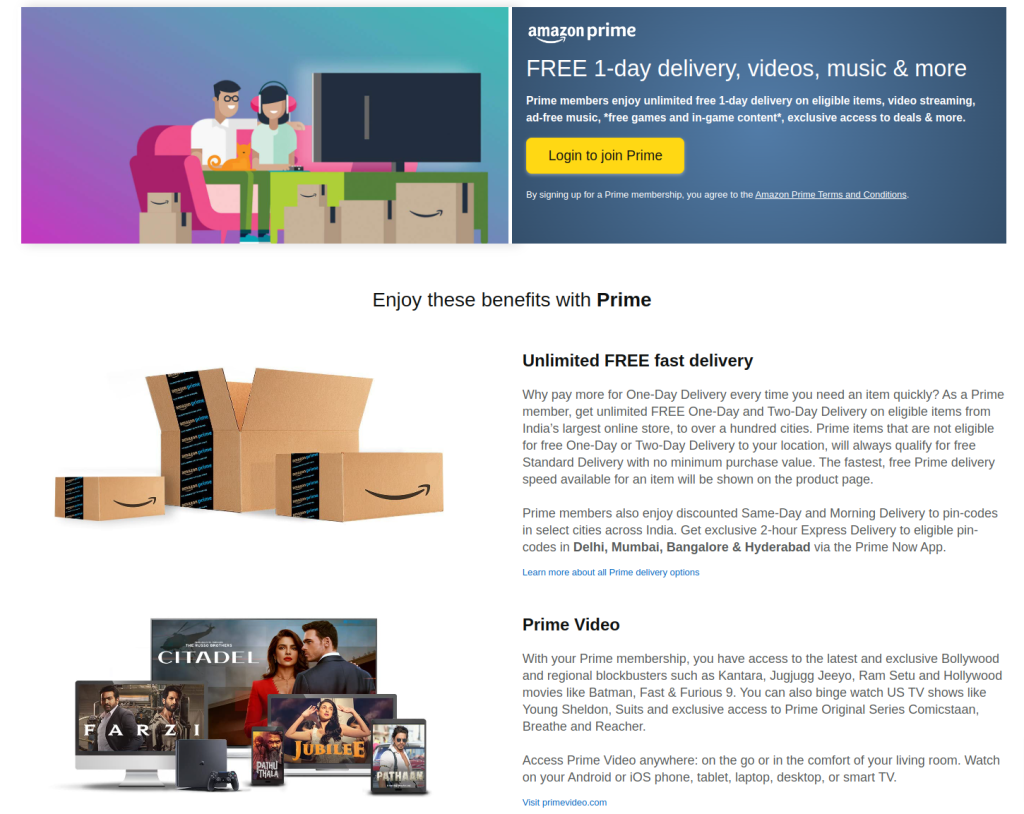
Communication Styles
Acquisition: Communication is more general and broad. The brand talks to a lot of people and tells them what’s special about their products or offers something exciting for new customers.
Starbucks is a good example. For newcomers, Starbucks promotes its signature drinks, the ambiance of its cafes, and sometimes, offers like “First coffee free!” It’s like attracting customers with eye-catching deals.
Retention: Here, the brand talks to you like a friend who knows what you like. They might offer deals just for you, suggest products they think you’ll love, or ask for your thoughts on something you bought.
For those who frequently visit Starbucks, the brand has a different way of communicating. With the Starbucks Rewards program, regular customers get personalized offers like discounts on their favorite drinks or bonuses on their birthdays.
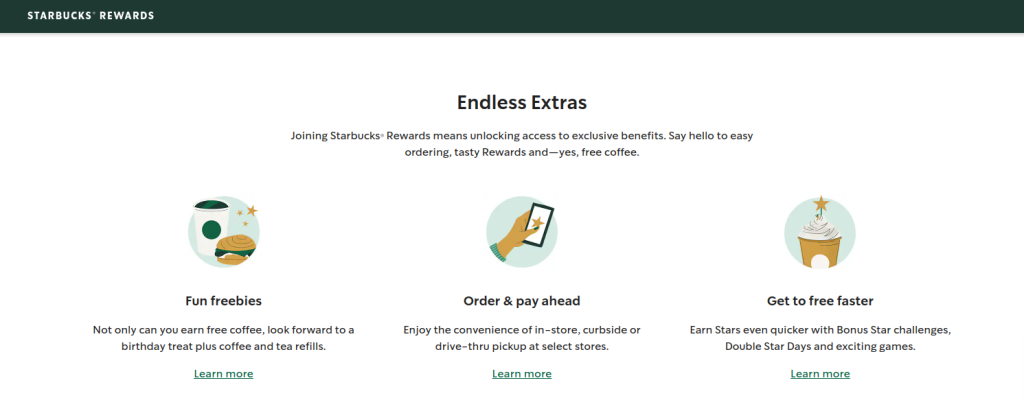
Risk & Uncertainty
Acquisition: There’s a lot of uncertainty when trying to get new customers because they might not know or trust the brand yet. So, even if we reach out, they might not buy from the owners.
For example, let us take the brand Apple. Every time Apple launches a new product, like the iPhone, they’re targeting both their loyal fan base and potential new customers.
Here, Apple’s customer acquisition plan development focuses on highlighting the unique qualities of their new products to attract first-time buyers. They run ads showcasing the new features and designs.
But there’s uncertainty: Will people like the new design? Will the features appeal to non-Apple users?
Retention: There’s less uncertainty with customers who have bought from you before since they already know your brand. But, you still need to work hard to keep them interested, especially when there are other brands around or if their tastes change.
For existing customers, Apple offers seamless integration between its products and services. If you have an iPhone, your photos and data sync effortlessly with an iPad or MacBook.
While this integration is great, there’s the risk that a significant change or flaw in one product could upset loyal users.
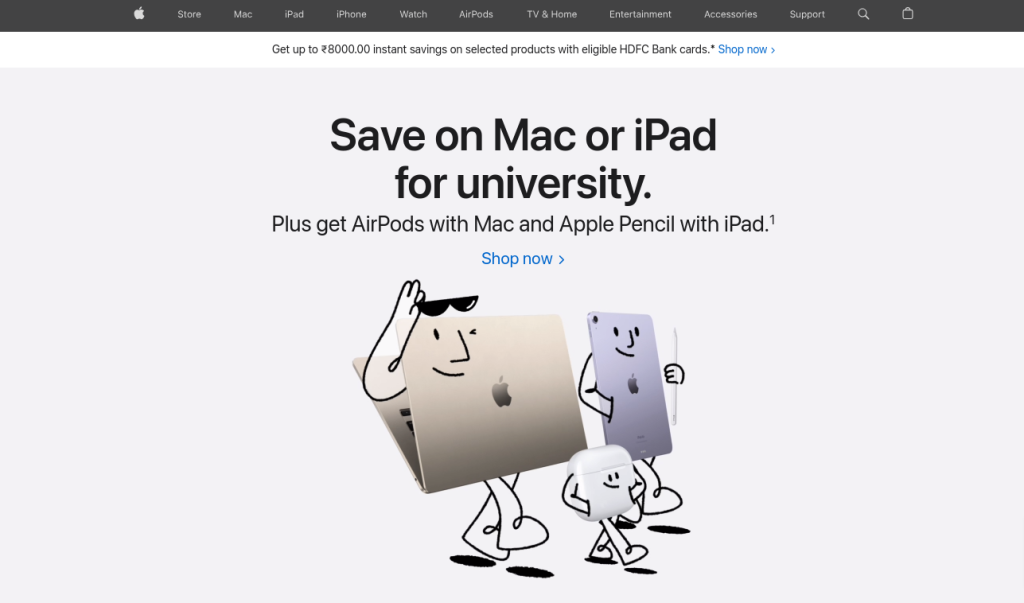
Short-term and Long-term vision
Acquisition (Short-term): Companies often see immediate results when they invest in customer acquisition strategies. The results can be quick, giving an instant boost to revenue.
For example, McDonald’s periodically introduces limited-time offerings or promotions. These can drive immediate sales and attract new customers.
Retention (Long-term): When a business uses retention strategies to keep its customers, like loyalty programs or special customer treatments, it might not see quick results. But, as time goes by, these methods help keep customers coming back, making the company’s income more steady and reliable.
For long-term growth, McDonald’s invests in reward programs, menu evolution, digital ordering platforms, and restaurant ambiance upgrades. It ensures that regular customers find value and consistency in their visits.
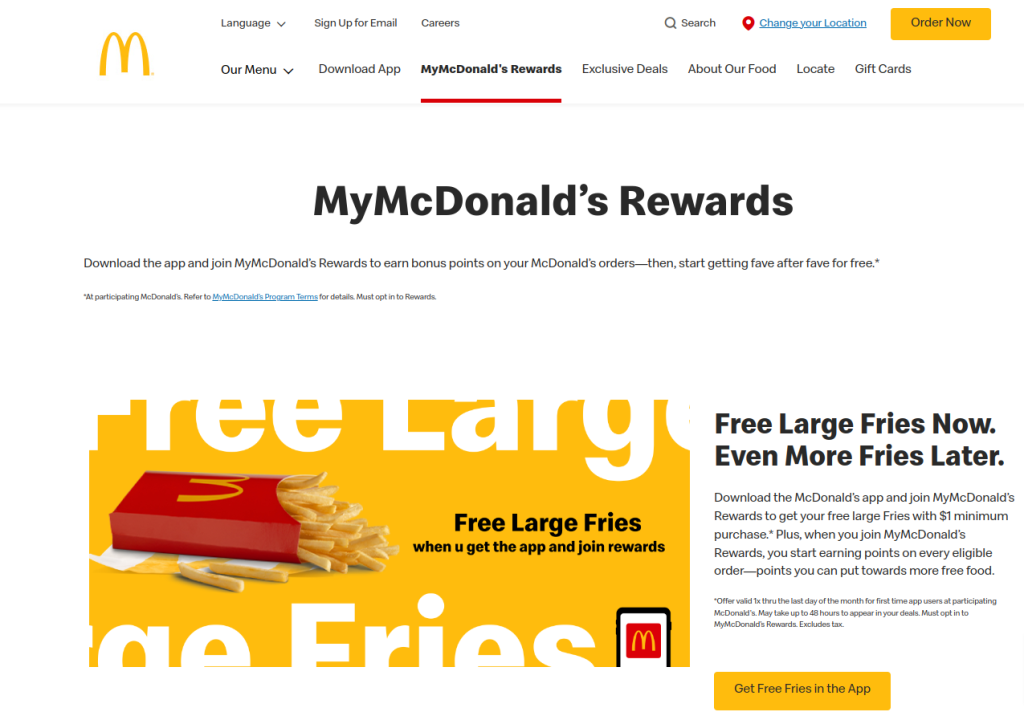
Retain existing customers and Acquire new customers by implementing referral programs using the WPLoyalty referral plugin.
Key Similarities of Customer Acquisition and Retention
Customer acquisition and retention, even though sometimes seen as opposites, they have some things in common. Both are super important for a business to grow and are closely connected. Let’s look at how they’re similar:
The Goal of Growth
Both customer acquisition and retention are driven by the primary objective of business growth. Acquisition refers to bringing in new customers, while retention focuses on keeping existing ones.
For a business to grow steadily, it needs a steady stream of new customers (acquisition) and the ability to keep them for the long term (retention). Thus, the combined efforts of these strategies result in the overall expansion and progress of a business. In essence, both are two sides of the same growth coin.
Building Trust
Trust is essential in both acquiring and retaining customers. When new customers are deciding whether to try a product or service, they want to trust that it will meet their needs.
Similarly, for existing customers to continue their patronage, they need to trust that the company will consistently deliver quality and value. In both scenarios, businesses must establish and maintain trust to succeed.
Feedback Loop
Feedback plays a vital role in both acquisition and retention strategies. For acquisition, feedback helps businesses understand the preferences and needs of potential customers. It shapes marketing and sales strategies.
On the other hand, retention uses feedback to ensure that existing customers are satisfied and to make necessary improvements. Thus, feedback is the link that connects the business to its new and old customers.
Importance of Quality
Regardless of whether a business is trying to attract new customers or keep the current ones, the quality of products or services is paramount.
In acquisition, a good first impression, driven by quality, can make the difference between a one-time transaction and a loyal customer.
For retention, consistent quality ensures that customers remain satisfied and loyal to the brand. Hence, quality is the backbone of both strategies.
Analyzing Customer Acquisition Costs and Retention Costs
The cost of customer acquisition vs retention is a much-analyzed spending metric among e-commerce businesses because they face the challenge of determining where their resources should be channeled.
To shed light on the long-term cost implications of these strategies, let’s dive into an interactive comparative timeline.
Here is how to calculate Custer Acquisition Cost:
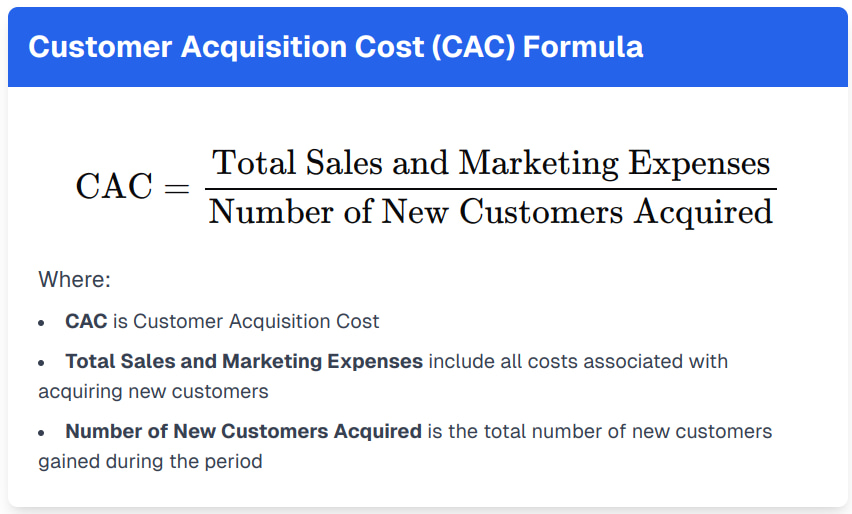
Year 1: Setting the Stage
Acquisition: The initial investment in customer acquisition is significant. Marketing campaigns, promotional discounts, and outreach efforts form the bulk of expenses.
Retention: Retention costs are relatively lower, focusing on customer service, loyalty programs, and engagement tactics.
Year 3: Growth and Engagement
Acquisition: While acquisition costs continue, they start to stabilize. The focus shifts slightly towards more targeted and efficient marketing strategies.
Retention: Investment in retention begins to increase, reflecting the growing base of repeat customers. Creating a loyalty program and personalized marketing are key areas of spend.
Year 5: Maturity and Optimization
Acquisition: Customer acquisition costs plateau or even decrease due to refined strategies and brand recognition.
Retention: Retention now becomes a major part of the budget, with a focus on customer satisfaction, personalized experiences, and quality service.
Beyond Year 5: Sustainability and Loyalty
Acquisition: Further reduction in acquisition costs as word-of-mouth and brand loyalty drive new customer growth.
Retention: Consistent investment in retention maintains a loyal customer base, driving sustainable growth and higher lifetime value.
Analyzing ROI: Customer Acquisition vs Retention
The Return on Investment (ROI) measures how much profit you make compared to your spending. To briefly understand the ROI, look at the example below,
Imagine you run a lemonade stand. To attract customers, you might create colorful signs and offer free samples. That’s customer acquisition. Now, if you provide more perks like points or rewards and your lemonade tastes great, customers will come back for more. That’s customer retention. Both have costs, but they bring in money when customers buy your lemonade.
Let’s break this down:
- Customer Acquisition:
- Cost: Money you spend on signs, free samples, and ads.
- ROI: Imagine you spend $10 on signs and samples, and 10 new customers buy lemonade. If each customer spends $2, you earn $20. Your profit is $20 (earnings) – $10 (cost) = $10. So, for every dollar spent, you earned $2 (because $20 ÷ $10 = 2). That’s a 2:1 ROI.
- Customer Retention:
- Cost: Maybe you introduce a loyalty card. After 5 purchases, the 6th is free. This costs you, but it encourages customers to come back.
- ROI: Suppose the loyalty card costs you $5. But because of it, 5 regular customers spend $2 five times. You earn $50. After giving one free lemonade (which costs you $1), your profit is $50 – $6 (card cost + free lemonade) = $44. For every dollar spent, you earned $7.33 (because $44 ÷ $6 = 7.33). That’s a 7.33:1 ROI.
Comparing the two, retaining customers seems to bring a higher ROI than acquiring new ones. That’s why many businesses focus on keeping their existing customers happy. However, both are essential. You need new customers for growth and loyal ones for steady income. It’s like attracting new friends and maintaining the bond with old ones – both are valuable in life and business!
Which is Your Top Priority – Customer Acquisition or Customer Retention?
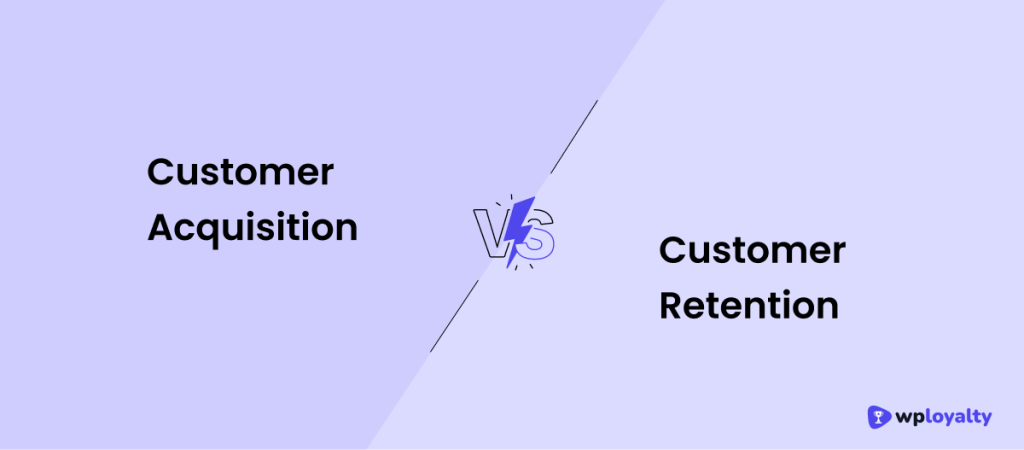
Deciding between customer acquisition and retention can feel like choosing between two essential things. Both have their value, and both are crucial for different reasons. If one had to pick a priority, it would lean toward customer retention.
Why Customer Retention Takes the Lead?
Customer retention takes the lead because it solidifies the value of initial customer acquisition efforts, ensuring they are not lost in vain. When a business retains customers, it sees a steady flow of income. These returning customers often spend more than new ones and bring in consistent revenue without the extra cost that comes with acquiring new patrons.
How to balance acquisition and retention resources to maximize customer profitability?
While customer retention might be the top priority, customer acquisition still holds its place. Businesses always need new customers to keep things fresh and to grow.
However, it’s essential to make sure that as new customers come in, the older ones aren’t slipping away. This balance between gaining new customers and retaining the old ones is what paves the way for sustained success.
Strategies for Balancing Customer Acquisition and Retention
The balancing act between customer acquisition vs retention can be achieved by implementing some effective strategies. Let us look into them.
Understand Your Audience: First things first, know who you’re selling to. For new customers, you might want to show off what makes your product unique. For existing customers, focus on how your products continue to benefit their lives.
Create Engaging Content: Online stores need fresh and engaging content. Keep things interesting for your returning customers while also attracting new ones. Maybe start a fun blog, post cool videos, or run exciting contests.
Offer Exclusive Deals: Everyone loves a good deal, and exclusive offers can be a great hook. Think about a special discount for first-time buyers or a loyalty program that rewards regular customers. This way, you’re giving both new and old customers a reason to shop with you.
Utilize Social Media: Use Social media to showcase your products, share customer stories, and even handle customer service. It’s a platform where you can attract new customers with eye-catching posts and keep existing ones engaged with interactive content.
Ask for Feedback: Encourage customers to tell you what they love or what can be improved. It not only helps in refining your business but also shows customers that their opinion matters. A happy customer is more likely to return and spread the word.
Quality Over Quantity: Lastly, remember that quality trumps quantity. Whether it’s your products, customer service, or marketing efforts, high quality will always attract and retain customers.
Acquisition and Retention are now made easy with the WPLoyalty WooCommerce plugin.
Bottom Line
Between customer acquisition and retention, acquisition lays the foundation for a business’s growth; retention ensures its long-term success. Think of it this way: acquisition sets the stage, while retention steals the show.
For a thriving business, striking a balance between customer acquisition and customer retention is the key. As the business matures, the focus might shift more towards retention, ensuring that those hard-won customers stay satisfied and loyal.
Read more about How to increase eCommerce sales, Why reward is it important to reward your first customer, How reward customers for referrals in WooCommerce.
Frequently Asked Questions
Customer acquisition involves attracting new customers, while retention focuses on keeping existing ones loyal.
The goal of customer acquisition is to expand the customer base, whereas retention aims to maintain and deepen existing relationships.
Customer experience encompasses all interactions a customer has with a brand, influencing retention, which specifically refers to keeping customers over time.
Customer growth refers to increasing the value and number of customers, while retention is about maintaining existing customer relationships.
The best retention strategy is to consistently provide excellent service and value, fostering customer loyalty and satisfaction.
A key to customer retention is understanding and meeting customer needs, ensuring continued satisfaction and loyalty.
The stages include customer onboarding, ongoing engagement, satisfaction assessment, addressing issues, and encouraging loyalty.
A good customer retention rate varies by industry but generally, rates above 60% are considered strong.
Customer acquisition is achieved through marketing, promotions, referrals, and offering unique value propositions to attract new customers.
Retention is often more important than acquisition as it costs less and loyal customers typically spend more and provide valuable referrals.
